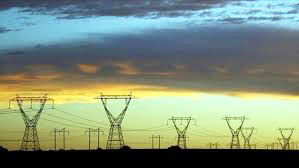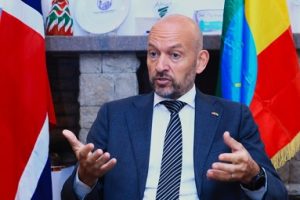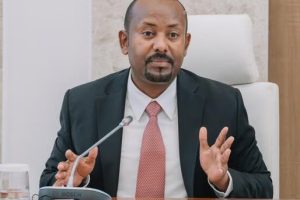
The successful completion of the first phase of the filling of the GERD has demystified many myths and disproved many narratives. Myth number one: Egypt is the proprietor of the Nile and that the other riparian countries should follow its diktat. The filling of the dam has clearly proved that the real owner of a share of the Nile waters is Ethiopia where more than 78 percent of the water is coming from.
Myth number two: Egypt will use any alternative including military power to stop the filling of the dam. This myth was propagated by the domestic and international media hostile top Ethiopia’s interests on the Nile. This narrative is also disproved as Egypt showed that it has no intention to go to war with Ethiopia over the GERD.
Myth number three: Egypt has to maintain its regional hegemony by controlling the flow of the Nile. This narrative is disproved as an outdated view that has no place in the 21st century. This view mainly propagated by friends of Egypt has no relevance in reality and those who push this line have no objective knowledge of past history and present-day realities.
Myth number four: The Nile originates from Egypt and from Lake Nasser. This is falsehood intentionally fabric.
There are also fake news, groundless allegations and false perception that have been invented to misguide the Egyptian public. The successful first phase filling of the GERD has put the record straight in many aspect of the GERD.
The good news last week was that the first phase of the filling of the GERD is now completed. The big question might be how the GERD will benefit all countries of the region once it is completed two years from now. There may be many hurdles along the road until that deadline will be reached but the GERD will be completed according to schedule because it has been filled according to schedule. If we keep the present momentum and if we will be lucky, two years from now, Ethiopian farmers along the Nile and elsewhere will see centuries-old darkness give we to light.
It may also take time until the benefits of the GERD will be felt across the nation and power cuts, interruptions, shortages and dark night will come to an end and surplus power will be sold to neighboring countries that are still needing more power for their budding industries. The power generating capacity of the GERD will be so big that the surplus production will no doubt prove a big asset to countries of the Horn region that are still suffering from perennial shortages. This may look like a good dream now but the GERD also started as a sweet dream. All big dreams look unachievable at first and turn into a kind of miracle once they are fulfilled.
As spokesperson of the Ethiopia Foreign Affairs Ministry, Ambassador Dina Mufti last week said in a press conference, “The Dam is not only a power generating infrastructure, but also a bond to further cement the bond further cement the common interests of African brothers and sisters in a bid to live in harmony and enjoy an equitable and just water share.” Accordingly, the GERD is an African property that will be used to promote African interests regionally and continentally. So, it has to be conceived as the first major project that will inevitably benefit not only upper and lower riparian countries but also countries in the Horn region that are not riparian to the Nile. At this stage one can perhaps think or dream of the GERD becoming a regional powerhouse.
It is now time to dream that the remaining obstacle on the road to realizing the big dream would be removed and that the time would come when the second dream of interconnecting the entire Horn region with a regional power grid originating from the GERD will prove another real prospect. All big dreams start as visions and end up as ordinary realities. The dream of interconnecting the Horn countries with a regional power grid may now sound a sweet dream.
The Hoover Dam in the United States also started as a dream and ended up a big engine that fueled American industrialization. A decade or so from now it may look like something ordinary. What it takes to achieve this big project might be to think the GERD as a regional power hub and the Horn region as a part of single country. After all Eritrea, Ethiopia, Somalia and Djibouti can be conceived as parts of a single country; maybe as provinces of a single entity.
The Hoover Dam, the biggest dam in the United States, was built on the borders of the States of Nevada and Arizona and served as the engine for America’s industrialization in the subsequent decades. There is no reason why the GERD cannot be used to fuel the economic development of the Horn countries. Such an approach only requires the ability to think outside the box and admit that Horn countries can be parts of a big single whole.
Some of the objectives of the GERD are stated as being the ability for Ethiopia to sell hydroelectric power to countries of the region and earn billions of dollars every year to fuel its economic development. This may be a narrow, nationalist philosophy of development. How can Ethiopia develop at the cost of the other countries of the region? This is neither Pan-Africanism not Globalism. It is only narrow nationalism and it does not look to the future but to the old and dead past as it was shaped by colonialism.
The new Pan-Africanism cannot be conceived outside regional integration, and the GERD is most likely to serve as one of the engines fueling regional development in order to serve Africa’s dream of collective prosperity. The long-term creation of the United States of Africa, as the founding fathers dreamed of it, cannot be conceived outside collective economic development. The GERD might indeed serve as the locomotive that will be pulling the region towards the African dream of total economic integration.
It is only when African countries abandon tribalism, ethnic narrow nationalism, bigotry in all its forms and communal violence that they can achieve regional and continental integration. The GERD can therefore serve as the power behind the future drive against tribalism and narrow nationalism and as the locomotive that will be pulling forward Africa’s centuries-old dream or unity and economic development.
By using the GERD as an African engine of regional and continental economic integration and development, one will be defeating ethnic narrow mindedness, tribalism, narrow nationalism and senseless communal violence that is presently causing so much havoc and elite-driven disasters in the region. So, the GERD can be used as a power hub that will help hundreds of millions of people in the Horn region abandon national peculiarities and embrace the Pan-Africanist perspective irrespective of creed, language, political aspiration and past history. The GERD would thus allow these countries look forward instead of looking backward or staying fixated on the present. The GERD has indeed a revolutionary potential of changing the politics and economics of the Horn region.
In the context of the newly-rediscovered spirit of cooperation between Ethiopia and Eritrea, the GERD can provide electricity to Eritrea without the country spending money on the construction of minor or major dams within its territory. That will allow the country save time and resources and rely on the GERD for its power needs at a relatively lower cost. This may be regarded as a move that might turn Eritrea into a kind of energy dependency but that will not be the case because the cost of getting energy from the GERD would be far lower than building new hydropower dams as long as this done in the spirit of Pan-Africanism and under a bilateral agreement.
Djibouti is already getting electric power from Ethiopia but future demands cannot be met with the present power capacity and as the country is set on developing, its future needs will be far higher than the present one. That demand would only be met by the GERD-generated electricity although the cost of connecting it to the main power grid might be high. It would may only be cost-effective from the long-term point of view. Such a regional power initiative should therefore be thought about in terms of decades and not a few years.
Somalia is still languishing in political crisis although the central government has the upper hand over Al Shabab terrorists. The country will be stabilized sooner or later and all efforts will be turned towards the tasks of reconstruction and rehabilitation of major infrastructures. Energy supply will therefore be a major challenge and this can be met with supply from the GERD if the relevant authorities start to think about the possibilities of energy connectivity with the GERD power hub.
The major hurdle to such a regional initiative might probably be securing the necessary funds for the construction of the sub regional distribution stations and that may be covered with international assistance and loans from global financial institutions that will be interested in the realization of such a regional project from which they too will profit.
Electric power from the GERD will not only be cost effective compared to building new dams in each Horn country; but that will also overcome the political parochialism and the tribalism that had been besetting Somalia for more than twenty years or so. Post-conflict Somalia will require a large amount of electric power to feed its industries and settlements that will be built as soon as the country will be freed from Al Shabab terrorism. It may therefore be time for Horn countries to think of a regional power grid starting from the GERD and going in the four directions and feeding all the towns and rural areas of Ethiopia along the road. A realizable dream or a fantasy? Time will tell. Anyway, it is not bad to dream big and act big.
The Ethiopian Herald August 2/2020
BY MULUGETA GUDETA




